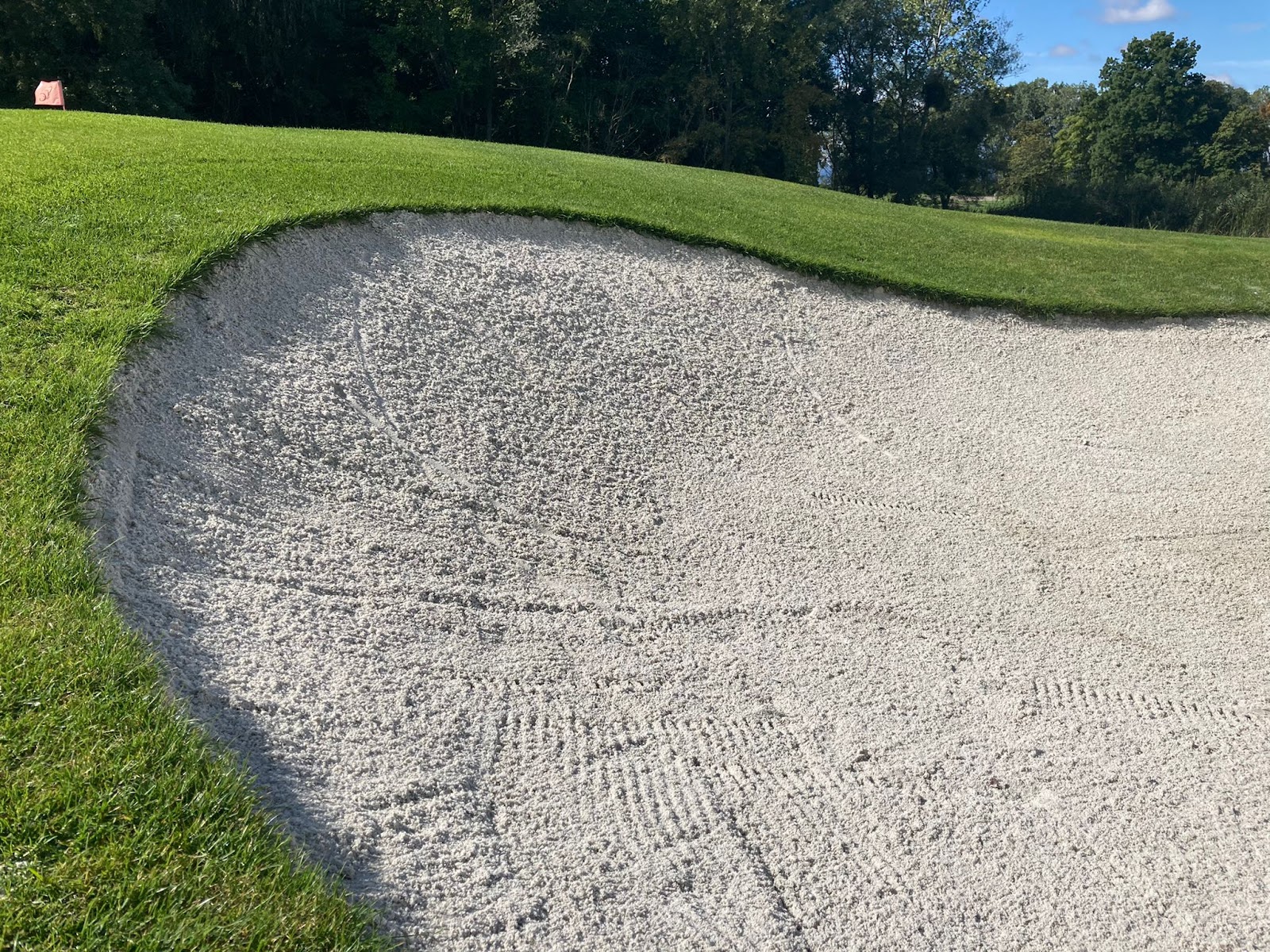Beyond the surface: Exploring the reasons for using bunker liners
Golf courses are intricate ecosystems, designed to challenge golfers while offering an aesthetic experience. Bunkers play a vital role in the game, demanding skill and precision. To enhance their quality and durability, golf course managers use bunker liners. This article explores the benefits of using bunker liners, including improved drainage, easier maintenance, and extended service life.

1 year after installation of a GolfDren product
Bunker sand drainage system
One of the most significant advantages of using bunker liners is their ability to improve the sand drainage system.
Golf courses face constant challenges from inclement weather, such as heavy rains, which can cause bunkers to flood and lead to erosion.
Bunker lining prevents these issues by providing a barrier that keeps sand in place, avoiding erosion and preserving the bunker's integrity and generally keeps the sand from mixing with the subsoil (clay, rocks, etc.).
Moreover, golf bunker liners enhance water percolation and drainage efficiency. By allowing water to drain through the sand and liner, the bunkers dry faster, making them playable even after heavy rainfall.
The inclusion of an artificial bunker edge ensures that the sand remains contained within the bunker's designated area, further enhancing its appearance and functionality. A well-maintained and clean bunker naturally ncreases the quality and reputation of the course, with the artificial edge contributing to its aesthetic appeal.
This innovative use of an artificial edge in conjunction with bunker liners showcases the golf course's commitment to both player experience and the course's long-term resilience.
Easier maintenance
Bunker liners significantly contribute to reducing maintenance efforts on golf courses. Without liners, sand can easily migrate due to wind or golfers' actions, leading to unsightly and time-consuming disruptions.
In addition, the use of bunker liners helps in curbing weed growth. Unwanted vegetation can be a recurring issue in bunkers, requiring frequent attention and resources to keep them under control. Bunker liners create a barrier that restricts weed growth, alleviating maintenance labor and reducing the need for chemical treatments.
Simply put, the sand in the bunker remains clean at all times.
Long service life
Durability is a key consideration for any golf course investment, and bunker liners made from materials like polyethylene and geofabric offer a long service life that withstands the rigors of daily use
Without liners, bunker sand may become contaminated or compacted over time, leading to uneven playing surfaces and increased maintenance costs. Bunker liners act as a protective barrier, preserving the sand quality and consistency, ensuring it remains in top condition for an extended period.
Furthermore, bunker liners play a vital role in minimizing sand contamination and pollution. They prevent the infiltration of soil, debris, and organic matter into the sand, maintaining its purity and playability.
Clean, uncontaminated sand contributes to a better golfing experience and reflects positively on the golf course's reputation.
Cost-effectiveness in the long run
Though the initial installation of bunker liners involves some upfront costs, they prove to be cost-effective in the long run. By improving the bunkers' durability and reducing maintenance efforts, bunker liners lead to cost savings over time.
Golf course managers can allocate their resources more efficiently, focusing on other aspects of course management and enhancement.
Moreover, the extended service life of bunker liners means less frequent replacements, translating to reduced material waste and a lower environmental impact. The cost-effectiveness makes them an attractive investment for golf course owners and managers.
Key takeaways
The primary reason for using a bunker liner is to safeguard and extend the lifespan of the sand while preventing washout. Placing bunker liners beneath the sand and on the subfloor provides additional protection for the sand.